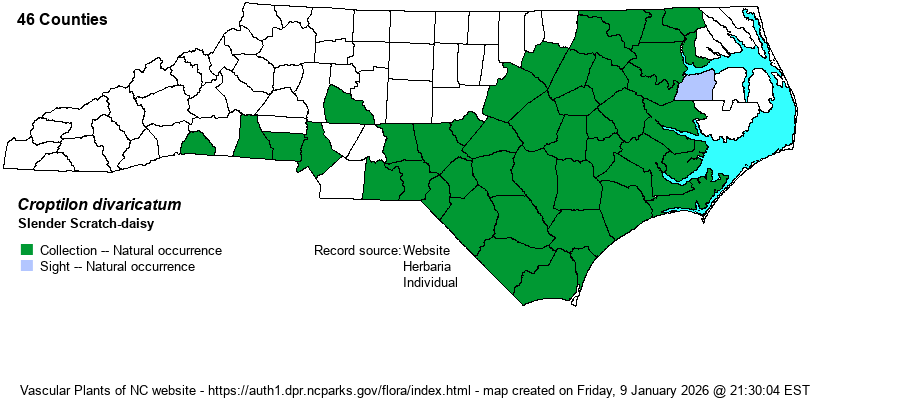| Author | (Nuttall) Rafinesque | |
| Distribution | Nearly throughout the Coastal Plain (including the Sandhills), and also sparingly in the southern Piedmont.
Southeastern VA to AR and OK, south to central FL and central TX. | |
| Abundance | Common to locally abundant in the Sandhills and parts of the southern Coastal Plain to the east. Fairly common in the northern Coastal Plain, but absent in the far northeastern counties. Rare to uncommon in the southern and eastern Piedmont. Note that the Global Rank should be moved to G5, instead of G4G5. | |
| Habitat | Dry to xeric sandy soils of Longleaf Pine-Wiregrass uplands (especially where disturbed mechanically), Loblolly Pine-oak woodlands, clearings, roadsides, fallow fields, powerlines. | |
| Phenology | Flowering and fruiting August-November. | |
| Identification | Slender Scratch-daisy is quite easy to identify, by its slender stems up to 4 or even 5 feet tall, its sessile, lance-shaped leaves with several teeth, and the open inflorescence of very small heads with yellow rays and disks. This species can be the dominant (tall) herb of vacant sandy fields in the southern Coastal Plain. | |
| Taxonomic Comments | In older texts treated as Haplopappus divaricatus.
| |
| Other Common Name(s) | Scratch-daisy. This species went for decades with essentially no common names, or poorly ingrained ones. | |
| State Rank | S5 | |
| Global Rank | G4G5 [G5] | |
| State Status | | |
| US Status | | |
| USACE-agcp | UPL link |
| USACE-emp | UPL link |

